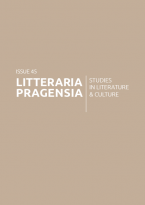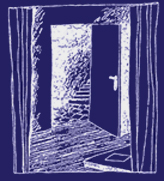
|
23.45 Memory, Conflict & Commerce in Early Modern EuropeEdited by: Martin Procházka, Paola Spinozzi and Rui Carvalho Homem Volume: 23 Issue: 45 September 2013 |
Contents
|
Paola Spinozzi
,
Martin Procházka
,
Rui Carvalho Homem
Introduction
|
1 |
|
Paola Spinozzi
Utopia, The City of the Sun and New Atlantis as Manifestos of Utopian Ideals in the European Renaissance
show abstract
Speculating on the most efficient forms of government and on the role of religion and science in society, Thomas More, Tommaso Campanella and Francis Bacon shape early modern thought in Europe and anticipate future political theories. In More's Utopia an intellectual oligarchy reminiscent of Plato governs a republic based on early Christian communities. Campanella's Civitas Solis is a communist republic governed by wise, learned people. In Bacon's New Atlantis civic life is organized according to a model of scientific work which the Royal Society will adopt a few decades later. While Renaissance utopian manifestos indicate a firm faith in human capability, they clash with our need for relativism and pluralism. Dystopian authors undermine the confident attitude displayed in utopias by adopting an inquisitive rather than assertive attitude: they do not reassure but generate responses that are both critical and constructive. The haunting appeal of their visions shows that the utopian/dystopian impulse continues to reach the reader or the spectator and always stimulates further visions and proposals. |
6 |
|
Marta Gibińska
Memory and Tragedy in Early Modern Culture
show abstract
Exploring the ways ancient ideas circulated and found their way into the Elizabethan and Jacobean tragedy reveals a specific tragic vision of the world and man in the universe as early modernity understood them. Discussion of such plays as Marlowe's Tamburlaine, Shakespeare's Roman tragedies, tragedies of love, history plays, the tragedies of revenge with Hamlet and the great tragedies in terms of the Aristotelian concepts of plot and character, mimesis, pity and fear brings forward the rich and varied context of the Elizabethans' ideas, beliefs, understanding of the world and human fate, as well as their terms of values of Renaissance Christian culture; it points to the politics and social morals of the sixteenth and seventeenth centuries in England. The social, economic and political realities of the time are related to Bourdieu's concepts of field and habitus to demonstrate the dependence of the refraction of the Aristotelian concepts and the shape of tragic vision on the actual experience of the individual and of society, as well as to open interpretive procedures which stress the relevance of tragedy and tragic vision to the people of the twenty-first century. |
26 |
|
Martin Procházka
“New Languages”: Pragmatism, Rhetoric and War in Shakespeare’s Second Tetralogy and Ford’s Perkin Warbeck
show abstract
Discussing the links between rhetoric and pragmatism in Shakespeare's Second Historical Tetralogy and later historical drama, represented by John Ford's The Chronicle History of Perkin Warbeck: A Strange Truth (1634), this article traces the changes in the use of rhetoric in early modern times. The first part is focused on the problems of rhetoric, law and truth as reflected in traditional approaches (the Sophists, Plato, Aristotle and Quintilian) and early modern theories (George Puttenham and Francis Bacon). The second part outlines some moments of the collapse of royal authority and the third the new uses of rhetoric in Shakespeare's Second Tetralogy, especially in the two parts of Henry IV and Henry V. The epilogue, referring to Ford's Perkin Warbeck, asks about the value of the play of fictions in a world whose "realities" are those of money and war. |
43 |
|
Andreas Mahler
As You (Don’t) Like It: In-Between Spaces on the Shakespearean Stage
show abstract
The forest, an island, a heath, the wilderness, or even a mask frequently appear on the Shakespearean stage as in-between spaces of indistinction and transition where things become temporarily suspended before they can be brought back to some solution cyclically restituting the ‘old’ (traditional) world order. Drawing on a close analysis of the (comic as well as tragic) plot structures of Shakespeare's As You Like It, King Lear and Hamlet, the article proposes to interpret some of these spaces as functional heterotopias in which oppositions normally regulating the given world do (for a certain time, at least) not apply. Accordingly, these heterotopias can be seen as spatio-temporal slots of ‘atoning,’ ‘restoring’ and ‘setting the world right’ again (though their impact seems to become less and less successful as time goes by). |
65 |
|
Nathalie Vienne-Guerrin
“You Have Rated Me”: The Insults of The Merchant of Venice
show abstract
Insult in Shakespeare's plays is usually an entertaining subject to work on. This paper focuses on the specificities of insults and the insulting mechanisms in The Merchant of Venice and discusses why it is not funny to study insults in this play. Here abuse seems to have no imagination and insults do not constitute a world of linguistic invention and innovation but rather of repetition. The text seems to be endlessly recycling the words “dog” (with its variant, “cur”), “devil” and “Jew” that seem to be hollow but are full of sound and fury. Far from signifying nothing, they mean a lot and their insulting impact and content are inescapable. More importantly, insults in The Merchant of Venice are a source of unrest, as the play dramatizes their traumatic effect and their impact on memory. Discomfort and trauma come from the fact that the play contains anti-Semitic abuse and that, notably after the Shoah, one cannot hear the word “Jew,” which is at the heart of this play and of the abuse of the play, in the same way as Shakespeare’s contemporaries. In this article insults are studied in the light of theoretical concepts and tools such as Évelyne Larguèche's “effet injure,” Judith Butler's “hate speech” and Denise Riley's “impersonal passion.” Closely inspected, the word “rate” in The Merchant of Venice reveals that insults are inscribed in a world of negotiation and exchange that has a lot in common with the world of commerce. |
82 |
|
Paul Franssen
Authorship, (Blue) Blood and Conspiracy: Fictions of Shakespeare and Oxford
show abstract
Traditionally, research about Shakespeare has centred on his work and its intrinsic meaning. However, increasingly we have been asking ourselves, with Terence Hawkes, what we "mean by Shakespeare." Usually this approach focusses on appropriations of his works, but it is the figure of Shakespeare that has attracted progressively more attention: the way his portraits, statues, or his life have been enlisted for various discourses. In this article, I take this one step further, by studying fictions of Shakespeare's life written from an anti-Stratfordian perspective. Although distrusted in academic circles, anti-Stratfordians themselves are utterly convinced of the truth of their theories, and often package these in fictions to convince the general public that Shakespeare's works were written by someone else. Recently, however, there has been a new development in such fictions. Books and plays written after 2000 tend to give up the traditional anti-Stratfordian strategy of heaping invective on Shakespeare, and presenting the "full truth" about the conspiracy to hide the authorship of their candidate; instead, they stress the uncertainty of what happened in the distant past, in view of conspiracies past and present, thus creating room for doubt. My focus is on a recent stridently Oxfordian film, Anonymous, which returns to the older strategy of representing Shakespeare as an illiterate scoundrel, and making truth claims for its conspiracy theory. I conclude that the film is not only out of step with recent trends in anti-Stratfordian fiction, but also reactionary in its portrayal of commoners, and in representing Queen Elizabeth I as an archetypical weak woman, incapable of rule. |
97 |
|
Agnieszka Romanowska
“This Is My Play’s Last Scene”: John Donne’s Poetry in Wit by Margaret Edson
show abstract
Margaret Edson's play on the last days of a university professor dying of cancer is an intriguing example of modern reception of John Donne. The play depicts a grippingly intense introspective quest towards enhanced self-awareness that the protagonist undertakes when faced with a terminal illness. This central development of the play revolves around a number of themes, the principal one being the questionable value of knowledge in relation to ultimately important issues like one's attitude to death. While Wit displays a variety of levels on which Donne's early modern poetry may function in today's cultural awareness, the article analyses the play's juxtaposition of knowledge and wisdom, tracing the links of power, authority, dependence and conflict in teacher-student and doctor-patient relationships. The dramatic techniques employed are presented as successful tools that enable the author to highlight the illuminating power of memory and remembrance. Finally, the play's ending is discussed in connection with the ambiguity of using Donne's poems in a text that is open to both religious and secular interpretations. |
112 |


